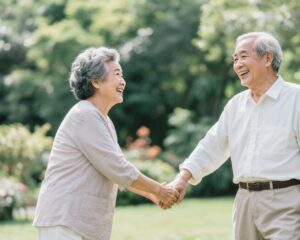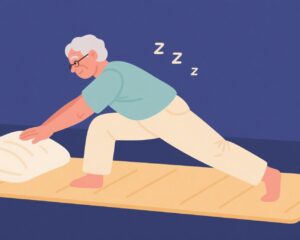Introduction
Sexual health is a vital component of overall well-being, intertwined deeply with physical fitness, emotional intimacy, and effective communication within a relationship. As people seek to improve their quality of life, understanding how exercise and relationship skills can enhance sexual well-being has gained increasing attention. Various forms of exercise contribute to better sexual function and endurance, while interpersonal strategies such as communication and mutual respect foster a more satisfying and harmonious sexual relationship. This article explores the scientific and practical aspects of improving sexual health through targeted exercises and relationship techniques.
The Importance of Communication and Interaction in Sexual Relationships
Open and honest communication with a partner about desires, boundaries, and needs is foundational for a fulfilling sexual relationship. Sharing thoughts and feelings allows couples to better understand each other, reducing misunderstandings and increasing intimacy. This form of interaction strengthens trust and brings partners closer, creating an atmosphere conducive to enhanced sexual satisfaction.
Role of Foreplay in Enhancing Sexual Experience
Spending adequate time and attention on foreplay is crucial to increasing sexual pleasure and intimacy. Foreplay encompasses a diverse range of techniques, including oral stimulation, manual techniques, and mutual massage, all of which serve to heighten arousal, enhance connection, and prepare the body for intercourse. Investing energy into foreplay increases overall satisfaction and can also improve physical responses during sex.
Exploring New Experiences for Variety and Excitement
Introducing novel sexual positions, toys, and scenarios can revitalize sexual experiences, making them more interesting and engaging. Trying new approaches helps couples discover fresh sensations and deepen their bond, thereby maintaining a dynamic and fulfilling sexual relationship.
The Impact of Physical Health on Sexual Function
Maintaining physical health is critical in optimizing sexual function and enjoyment. A balanced diet, regular exercise, and avoiding harmful habits like smoking and excessive alcohol intake play essential roles in this regard. Healthy bodily function enhances libido, improves stamina, and boosts cardiovascular health, all of which contribute directly to sexual performance and satisfaction.
Mutual Respect as the Foundation for Healthy Sexual Relationships
Respecting each other’s preferences, limits, and choices is vital for a sustainable and healthy sexual relationship. This mutual respect nurtures emotional safety and allows both partners to express themselves freely without fear of judgment, thereby fostering deeper connection and enhancing the overall quality of sexual interactions.
Exercise Types that Enhance Sexual Well-being
Physical exercise not only supports general health but also specifically benefits sexual function and satisfaction. The following exercises have been studied for their positive effects:
- Aerobic Exercises: Activities like running, swimming, and aerobic dance improve cardiovascular fitness, increasing endurance and sexual stamina by enhancing heart and lung function.
- Cycling: Cycling strengthens the lower body muscles, particularly around the pelvis and thighs, improving circulation and sexual function. It also elevates heart rate and metabolism, contributing to increased energy levels.
- Yoga: Yoga enhances flexibility, balance, and relaxation, reducing stress and improving mental well-being. It also promotes stronger pelvic muscles and has been shown to enhance sexual function and satisfaction.
- Jump Rope: This activity builds muscular strength and cardiovascular capacity, which can translate into increased sexual endurance and performance.
- Kegel Exercises (Pelvic Floor Muscle Training): Particularly important for men, pelvic floor exercises strengthen the muscles involved in ejaculation control. Enhanced muscle tone can lead to better control over ejaculation timing and quality, increasing sexual satisfaction.
Case Scenario: John and Lisa’s Journey to Improved Sexual Health
John, a 45-year-old man experiencing diminished sexual stamina, and his partner Lisa, sought to rekindle their intimacy. Incorporating aerobic exercises thrice weekly and attending yoga classes together helped John improve his cardiovascular fitness and flexibility. Additionally, practicing pelvic floor exercises gave him better control. They also enhanced their communication by openly discussing preferences, which helped reduce anxiety and strengthened their emotional bond. Over several months, their sexual satisfaction and relationship quality notably improved.
Key Recommendations for Enhancing Sexual Quality of Life
- Engage in regular aerobic exercise to build cardiovascular capacity and endurance.
- Incorporate strength-building activities such as cycling and jump rope to improve overall fitness and sexual function.
- Practice yoga to increase flexibility, reduce stress, and promote pelvic health.
- Perform pelvic floor exercises to enhance muscle control of sexual functions.
- Maintain open, honest communication with your partner to foster intimacy and mutual understanding.
- Respect each other’s boundaries and preferences to build a safe and trusting sexual relationship.
- Explore new sexual techniques and experiences together to keep your sexual life exciting and fulfilling.
Conclusion
A healthy lifestyle combining purposeful exercises with effective relationship techniques can significantly improve sexual health and overall quality of life. Emphasizing communication, mutual respect, and physical fitness helps couples experience more satisfying, resilient, and joyful sexual relationships. Future research should continue exploring tailored interventions that integrate physical and psychological components of sexual well-being.
References
1. Laumann EO, Paik A, Rosen RC. Sexual dysfunction in the United States: prevalence and predictors. JAMA. 1999;281(6):537-544.
2. Kaleth AS, Slaven JE. Aerobic exercise improves sexual function and quality of life in individuals with physical disabilities. Sexual Medicine Reviews. 2019;7(4):634-648.
3. Ponholzer A, Temml C, Marszalek M, et al. Prevalence and risk factors for erectile dysfunction in 2869 men using a validated questionnaire. Eur Urol. 2005;47(1):80-85.
4. Patel M, Hiller JE, Peprah DS, Tynan A. The role of pelvic floor muscle training on erectile dysfunction: a systematic review. Neurourol Urodyn. 2019;38(2):527-535.
5. Javaheri J, Redline S. Insomnia and risk of sexual dysfunction: links and mechanisms. Nat Rev Urol. 2012;9(9):485-496.
6. Field T. Yoga clinical research review. Complement Ther Clin Pract. 2011;17(1):1-8.


